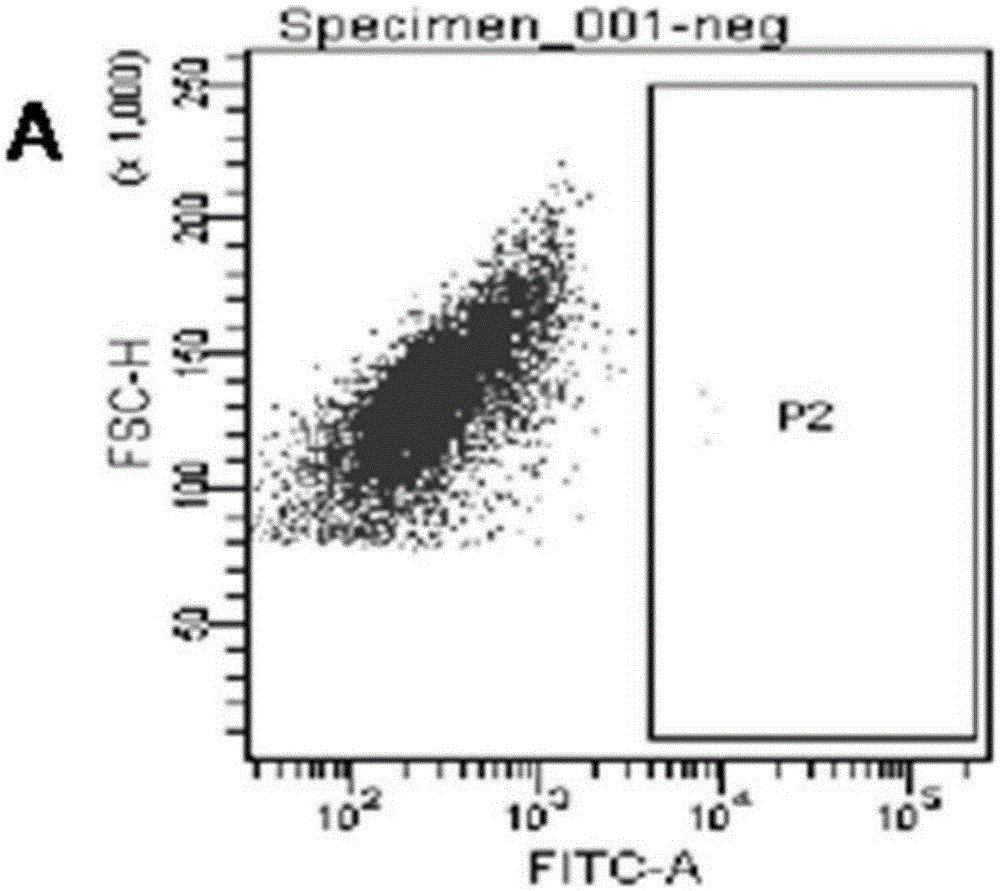Method for promoting reprogramming of mouse fibroblasts into myocardial cells under low oxygen conditions
A technology of fibroblasts and cardiomyocytes, applied in epidermal cells/skin cells, animal cells, vertebrate cells, etc.
- Summary
- Abstract
- Description
- Claims
- Application Information
AI Technical Summary
Problems solved by technology
Method used
Image
Examples
Embodiment 1
[0034] Example 1 Isolation and cultivation of mouse fibroblasts and cardiomyocytes
[0035] C57BL / 6J mice and Kunming white pups were taken from 1 to 3 days after birth, and the primary fibroblasts were cultured. It was observed that the primary fibroblasts began to swim out and adhere to the wall 3 days after the back skin tissue block adhered to the wall. figure 1 A), the digested cells are in suspension, and they are round transparent balls under the light microscope. The 3rd to 5th passage fibroblasts were selected for induction, the cells at this time have high purity and the best growth state.
[0036] Cardiomyocytes were inoculated in a culture dish by trypsin digestion, and the cells floated in a single spherical shape in the culture medium. After 12 hours of culture, they began to adhere to the wall and grow. They were round and then became spindle-shaped. figure 1 B).
Embodiment 2
[0037] Example 2 Establishment of Mouse Fibroblasts Directly Reprogrammed into Cardiomyocyte Model
[0038] Molecular cloning and lentivirus infection of fibroblasts
[0039] Construction of lentiviral vector
[0040] Primers were designed according to the sequences of Gata4, Mef2c and Tbx5 to amplify Gata4, Mef2c and Tbx5 genes respectively; high-quality recombinant plasmids were extracted and purified, and lentiviral plasmid expression vectors carrying the target genes were constructed. Assisted by GeneCopoeia.
[0041] Virus fluid production
[0042] 293T is a lentivirus packaging cell, which is an anchorage-dependent epithelioid cell, and its growth medium is DMEM (containing 10% FBS). Adherent cells grow and proliferate in culture to form a monolayer of cells. Viruses were packaged in 293T cells that were in good condition and had fewer passages. The 293T cell supernatant 48 hours after transfection was collected, centrifuged and filtered to obtain the virus liquid. ...
Embodiment 3
[0060] Example 3 Effect of hypoxia on the efficiency of direct reprogramming of fibroblasts into cardiomyocytes
[0061] Direct reprogramming of fibroblasts into cardiomyocytes in a hypoxic microenvironment
[0062] During the reprogramming process, cells were cultured in normoxia (control group) and hypoxia (experimental group with 2% O 2 +5%CO 2 +93%N 2 ), choose 6h and 12h hypoxic pretreatment. Mouse skin fibroblasts were infected with lentivirus, and the cell morphology was observed every 24 hours during the reprogramming process. The cell fluorescence appeared on the 3rd day after transfection. At this time, the cell fluorescence was weak and the number was small. The number of fluorescent cells in the hypoxic 12h group was more than that in the hypoxic 12h group, and the number of fluorescent cells in the hypoxic pretreatment group for 12h was more than that in the normoxia group. The fluorescence intensity of the cells at 1, 2, 3, and 4 weeks after transduction grad...
PUM
 Login to View More
Login to View More Abstract
Description
Claims
Application Information
 Login to View More
Login to View More - R&D
- Intellectual Property
- Life Sciences
- Materials
- Tech Scout
- Unparalleled Data Quality
- Higher Quality Content
- 60% Fewer Hallucinations
Browse by: Latest US Patents, China's latest patents, Technical Efficacy Thesaurus, Application Domain, Technology Topic, Popular Technical Reports.
© 2025 PatSnap. All rights reserved.Legal|Privacy policy|Modern Slavery Act Transparency Statement|Sitemap|About US| Contact US: help@patsnap.com



